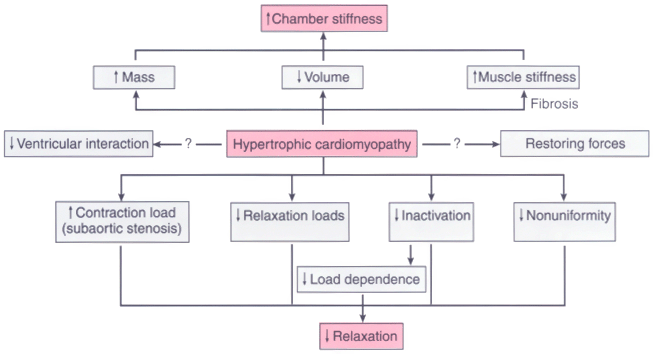 |
 |
Figure 50-20
Diastolic dysfunction in hypertrophic cardiomyopathy
(HCM). Increased chamber stiffness or decreased compliance occurs as a result of
increased muscle mass and the resulting decreased ventricular volume. Increased
muscle stiffness also occurs as a result of myocardial fibrosis. Thus, all three
factors that affect the stiffness or compliance of the ventricle are altered in a
way that increases chamber stiffness. Left ventricular relaxation in HCM is impaired
because of changes in loading conditions, decreased inactivation, and increased nonuniformity.
The subaortic stenosis in obstructive HCM represents a contraction load on the ventricle
that delays and impairs relaxation. Coronary and ventricular filling loads, which
aid in relaxation, are reduced in HCM because of the degree of hypertrophy and other
reasons. High myoplasmic calcium results in decreased inactivation, which impairs
relaxation both directly and indirectly by the relaxation process. Finally, much
nonuniformity exists in HCM, another factor that also impairs relaxation. Thus,
all three factors controlling relaxation are altered to impair it in HCM. (Redrawn
from Wigle ED, et al: Hypertrophic cardiomyopathy. In
Abelmann WH, Braunwald E [eds]: Cardiomyopathies, Myocarditis, and Pericardial Disease.
Atlas of Heart Diseases, vol 2. Philadelphia, Current Medicine, 1995.)

 |
